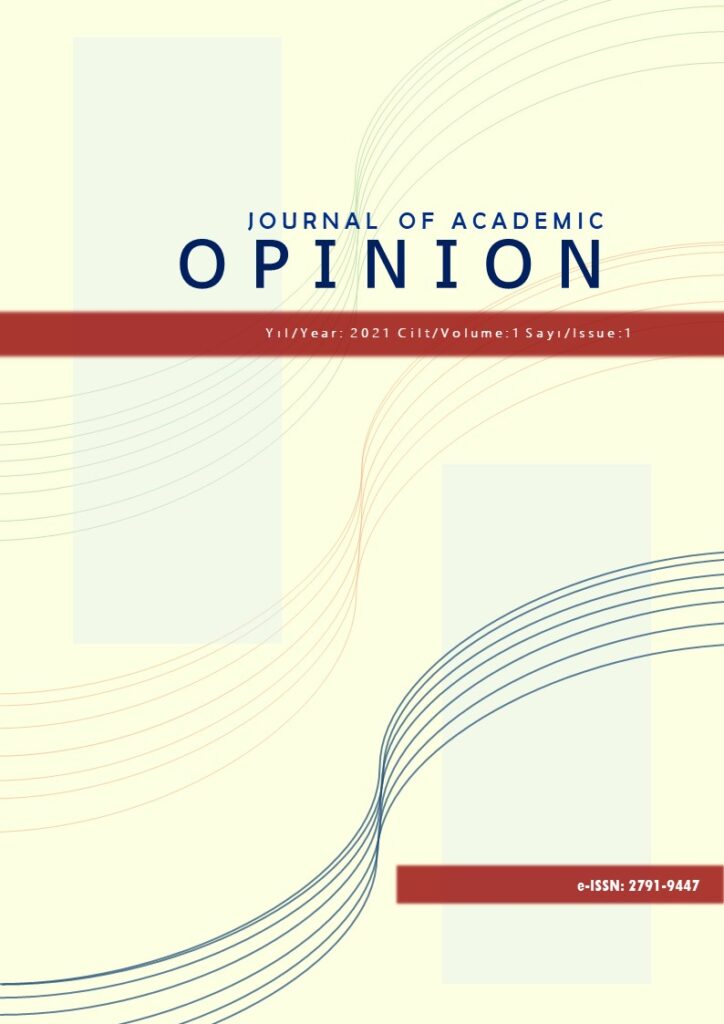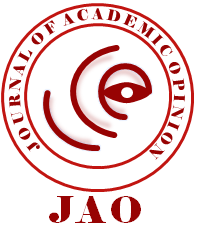Institutional Factors and Growth in Turkey: An Assessment on the Growth Process in 2010-2020 Period
DOI:
https://doi.org/10.5281/zenodo.7497212Keywords:
Institutional Structure, Growth, Turkish EconomyAbstract
The Turkish economy has been experiencing a process in which the growth rates converged to zero in there cent period. Although this situation is evaluated within the framework of a characteristic specific to the current period, it is important to reveal the main problem in terms of the continuity of the growth process in the up coming period. One of the most important components of the growth process is investments. The trends of foreign direct investments and domestic investments in Turkey in the post-2010 period provide information about the convergence of the growth process to zero. However, in order to examine the main reasons for this process, it is also necessary to examine the development of institutional factors in Turkey after 2010. In this context, the trend of institutional factors related to property rights protection, legal enforcement of contracts, regulations forthe labor market, controls over capital and the mobility of individuals, establishment of a business and economic freedom is emphasized. According to the trend of institutional factors, values of institutional variable ssuch as property rights protection, legal enforcement of contracts, controls over capital and the mobility of individuals and economic freedom have decreased. Accordingly, in order for Turkey to enter the 2020’s with a stronger growth target, it is necessary to identify the problems related to institutional factors, to eliminate these problems and to strengthenth existing institutional structure after the problems are resolved. When the institutional structure is strengthened, the incentive mechanism will be activated and the way for more efficient use of resources will be paved.
References
Acemoglu, D. andRobinson, J. (2008), The Role of Institutions in Growthand Development, The International Bank forReconstructionand Development / The World Bank On behalf of theCommission on Growthand Development, WorkingPaper No. 10.
Adas, C. G. ve Kartalli, F. Y. (2016). SuddenStopsandCapitalControls: WhentoApply in Turkey. International Journal of Economicsand Finance, 8(4), 289-305.
Adebayo, O. E. (2019). IntellectualPropertyRightsandEconomicGrowth in SelectedAfricanCountries, ActaUniversitatisDanubius. Œconomica, 15(3), 170-186.
Agbloyor, E. K.,Gyeke‐Dako, A., Kuipo, R., andAbor, J. Y. (2016). Foreign Direct InvestmentandEconomicGrowth in SSA: The Role of İnstitutions. Thunderbird International Business Review, 58(5), 479-497.
Alley, I. (2017), CapitalFlowSurgesandEconomicGrowth in Sub-SaharanAfrica: Any Role forCapitalControls? (No. 252). WorkingPaper Series.
Biçen, Ö. F. (2018), Yükselen Piyasa Ekonomilerinde Sıcak Para Hareketlerine Bağımlılık ve İktisadi Büyüme, Ankara: Gazi Kitabevi.
Carlsson, F. andLundström, S. (2002), EconomicFreedomandGrowth: DecomposingTheEffect, PublicChoice, 112, 335-344.
Cavallo, E. A. andFrankel, J. A. (2008). DoesOpennesstoTradeMakeCountriesMoreVulnerabletoSuddenStops, orLess? Using GravitytoEstablishCausality. Journal of International Money and Finance, 27(8), 1430-1452.
Das, K.,andQuirk, T. (2016). WhichInstitutionsPromoteGrowth? RevisitingTheEvidence. EconomicPapers: A Journal of AppliedEconomicsandPolicy, 35(1), 37-58.
Dawson, J. W. (1998). Institutions, Investment, andGrowth: New Cross‐Country and Panel Data Evidence. EconomicInquiry, 36(4), 603-619.
Dawson, J. W. (2003), Causality in theFreedom-GrowthRelationship, EuropeanJournal of PoliticalEconomy, 19, 479-495.
De Haan, J. andSturm, J. E. (2000), On theRelationshipBetweenEconomicFreedomandEconomicGrowth, EuropeanJournal of PoliticalEconomy, 16, 215-241.
Domar, E. D. (1946). Capital Expansion, Rate of Growth and Employment. Econometrica, 137-147.
Falvey, R.,Foster, N. andGreenaway, D. (2006). IntellectualPropertyRightsandEconomicGrowth. Review of Development Economics, 10(4), 700-719.
FraserInstitute (2020), EconomicFreedom of the World: 2020 Annual Report, https://www.fraserinstitute.org/economic-freedom/dataset?geozone=world&year=2018&page=dataset&min-year=2&max-year=0&filter=0, Erişim: 15.10.2020.
Gwartney, J.,Lawson, R. andBlock, W. (1996), EconomicFreedom in the World, 1975–1995. FraserInstitute, Vancouver.
Hailu, Z.,Nkote, I. N. andMunene, J. C. (2017). PropertyRightsandInvestment: TheMediatingEffect of ContractEnforcement. International Journal of Lawand Management, 59(1), 21-34.
Hall, R. E. andJones, C. I. (1999). Why Do SomeCountriesProduceSoMuchMoreOutput Per WorkerThanOthers?, TheQuarterlyJournal of Economics, 114(1), 83-116.
Harrod, R. F. (1939). An Essay in Dynamic Theory. Economic Journal, 14-33.
Ivanović-Djukić, M.,Stefanović, S., vanStel, A., andAteljević, J. (2019). Corruption as an ObstacleforStarting a New Business in Serbia. International Review of Entrepreneurship, 17(1), 37-58.
Jude, C.,&Levieuge, G. (2017). GrowthEffect of Foreign Direct Investment in DevelopingEconomies: The Role of İnstitutionalQuality. The World Economy, 40(4), 715-742.
Keefer, P. and Knack, S. (1997), WhyDon’tPoorCountriesCatchUp? A Cross-National Test of an InstitutionalExplanation, EconomicInquiry, 35, 590-602.
Keefer, P. andKnack, S. (2002). Polarization, PoliticsandPropertyRights: Links BetweenInequalityandGrowth. PublicChoice, 111(1-2), 127-154.
Matthews, R. C. (1986). TheEconomics of InstitutionsandTheSources of Growth. TheEconomicJournal, 96(384), 903-918.
Negi, V. andBardhan, A. K. (2017). Labour Market Regulationsand FDI Inflows in DevelopingCountries–An Empirical Analysis, Journal of International Economics, 8(2), 27-42
North, D. C. (1981). StructureandChange in EconomicHistory. New York: W. W. Norton andCo.
North, D. C. (1991), Institutions, Journal of EconomicPerspectives, 5(1), 97-112.
North, D. C., (2010), Kurumlar, Kurumsal Değişim ve Ekonomik Performans, İstanbul: Sabancı Üniversitesi Yayınları.
Paakkönen, Jenni (2010), “EconomicFreedom as Driver of Growth in Transition”, EconomicSystem, 34, 469-479.
Rodrik, D.,Subramanian, A., andTrebbi, F. (2004). InstitutionsRule: ThePrimacy of InstitutionsOverGeographyand Integration in Economic Development. Journal of EconomicGrowth, 9(2), 131-165.
Solow, R. M. (1956). A Contribution to the Theory of Economic Growth. The Quarterly Journal of Economics, 65-94.
The World Bank (2020a), Foreign Direct Investment, Net Inflows (% of GDP) ve Foreign Direct Investment, Net Inflows (BoP, current US$), World Development Indicators, https://databank.worldbank.org/, Erişim: 15.10.2020.
The World Bank (2020b), GDP Growth (Annual %), World Development Indicators, https://databank.worldbank.org/, Erişim: 15.10.2020.
The World Bank (2020c), GDP (constant 2010 US$), World Development Indicators, https://databank.worldbank.org/, Erişim: 19.12.2020.
The World Bank (2020d), GrossCapitalFormation (% of GDP) ve GrossCapitalFormation (Current US$), World Development Indicators, https://databank.worldbank.org/, Erişim: 15.10.2020.
Tunçsiper, B. ve Biçen, Ö. F. (2014), Ekonomik Özgürlükler ve Ekonomik Büyüme Arasındaki İlişkinin Panel Regresyon Yöntemiyle İncelenmesi, Eskişehir Osmangazi Üniversitesi İİBF Dergisi, 9(2), 25‐ 45.
Wanjiru, R.,and Prime, K. S. (2018). Institutions, EconomicGrowthand International Competitiveness: A RegionalStudy. In ContemporaryIssues in International Business, 99-124, PalgraveMacmillan, Cham.
Veblen, T. (1898). “Why is Economics not an EvolutionaryScience?,TheQuarterlyJournal of Economics, 12(4), 373-39.
Downloads
Published
How to Cite
Issue
Section
License
Copyright (c) 2021 Journal of Academic Opinion

This work is licensed under a Creative Commons Attribution 4.0 International License.





